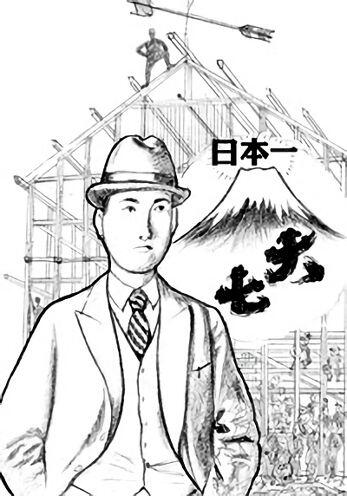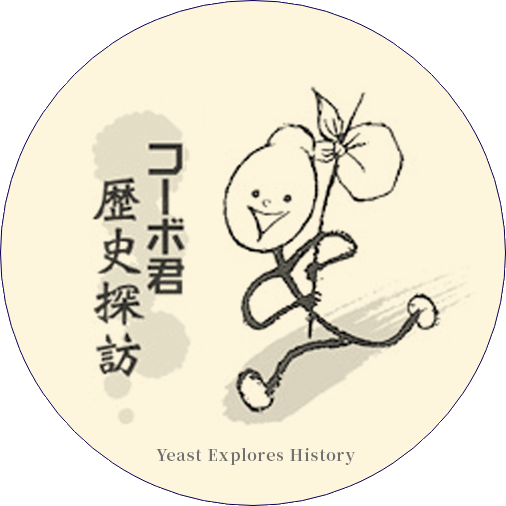| Old Well |
“Yeast, are you alright?” |
|
 |
| Yeast |
“I’m doing great!” |
| Old Well |
“Good. The disasters that struck our ancestors at one time almost led to the downfall of the brewery. I’m talking about the terrible spoiled sake incident. In 1914, the 6th Generation died and the husband of his younger sister Teu, called Minomatsu, became the 7th Shichiuemon. Because the 6th Generation didn’t have children, he had adopted his sister and her husband as successors. The next year turned into a bad dream. All over Japan there was a great spoilage of sake, something which continued for two years. It is known as ‘The Great Spoilage of the Taisho Period.’ The 7th Generation, who had been in the Imperial Army and had no experience in the family business to which he had only recently succeeded, was at his wits’ end. He became ill from anxiety and died in the spring of the third year of his being family head, at the age of 47.” |
| Yeast |
“How pitiful! How did the family cope?” |
| Old Well |
“It wasn’t easy. Due to the two year long spoilage, our financial situation had deteriorated, and our reputation had been damaged. The only male member of the family was the 15-year old Teiichi, the eldest son. A family council was held and it was decided that Teiichi who was a pupil of Asaka Middle School would leave school – however much the school head regretted that – to become the 8th Shichiuemon. Many tasks were waiting for him. First he had to deal with the aftermath of the spoilage, and next he had the change the brand name ‘Oyama’ that the brewery had used since its founding.” |
| Yeast |
“Why was that?” |
| Old Well |
“In the Meiji period the system of trade mark registration was introduced, and it was not possible to register a name that was already in use by others. The 8th Generation devised the name ‘Daishichi’ by combining part of the old name (the kanji for the ‘O’ in Oyama can also be read as ‘Dai’) with ‘Shichi’ (‘Seven’) of the hereditary name ‘Shichiuemon.’ With that new name in mind, he climbed Mt Fuji and after that went immediately to the public office to register the new name. That was on the 7th day of the 7th month of the year Taisho 7 (1918). The young 8th Generation did more than that. He also introduced the new sokujomoto brewing technique. In the final years of the Meiji period, the government had developed this method as a trump card against the spoilage problem. The time and labor necessary was also much less than in the case of the kimoto method, and it was a safe and secure brewing method, so it spread all over Japan. As at that time this was seen as an opportunity to improve the technique of sake brewing, the 8th Generation diligently studied this new brewing method. He visited breweries in Akita prefecture which were in that respect at the forefront, and asked for instruction. But the more he studied sokujomoto, the more he felt it left something to be desired. As with sokujomoto he couldn’t brew the sake he really wanted, the 8th Generation became convinced that Daishichi should never give up the kimoto method. Yeast, do you understand that with this decision the 8th Generation laid the foundation of the Daishichi of today? The 8th Generation didn’t have a robust constitution, but he was sleeping and waking engrossed in sake brewing, and became a regular winner of the first prize at the Japan Sake Awards. Daishichi’s reputation rose suddenly and in 1926 he fulfilled his long-cherished desire of building a new brewery. Therefore he could more and more brew the sake he considered as ideal, and thanks to that in 1928 he was officially requested to brew the sake for the enthronement of the Showa Emperor. That was an enormous distinction. And in 1938 – the master brewer at that time was Yosaburo Sato – he won the highest prize at the 16th Japan Sake Awards. In other words, Daishichi’s reputation was fully established. It had gained the first place in Japan.” |
| Yeast |
“Bravo! He made it!” |





